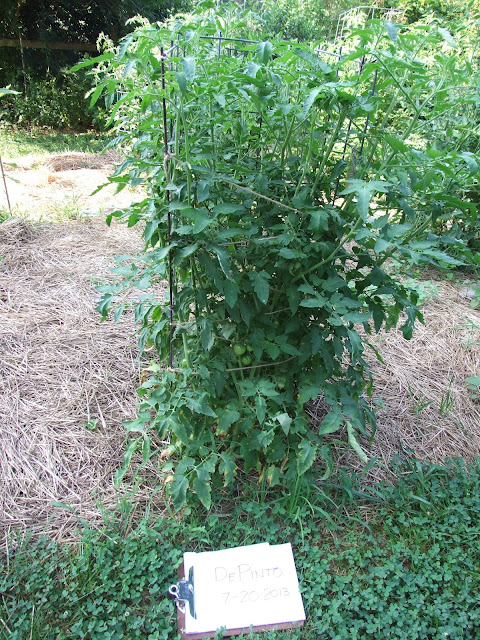 |
| The Andes in the 'Mater Patch again. Plenty of flowers - she's just not interested in setting any fruit. The 'Mater Patch plants were almost all planted in 2nd quarter Sagittarius. |
 |
| Bull Bags on the vine. I believe these will top out between one and two pounds apiece this year due to all the rain. |
 |
| Butler finally looking like a proper tomato plant and thinking about producing fruit. Bless Butler Skinner's little heart, he's slow but worth the wait. |
 |
| Chapman looking just pretty and problem free. |
 |
| Costoluto Genovese being huge and productive. There are easily twenty fruit already on this one plant, and they will all probably top 8 ounces from the look of it. |
 |
| Cuneo Giant Pear - which may be the same tomato, according to Dr. Carolyn Male, as Coeur d'Albenga, Piriform, and possibly Liguria. From Tatiana Kouchnareva in British Columbia. |
 |
| Doing very well - took a while to set fruit, but Emerald Evergreen is throwing them right and left now that she's decided to do it. |
 |
| Jaune Flammee isn't a tomato orphan, but she is a mainstay of our garden - every year without fail. |























No comments:
Post a Comment